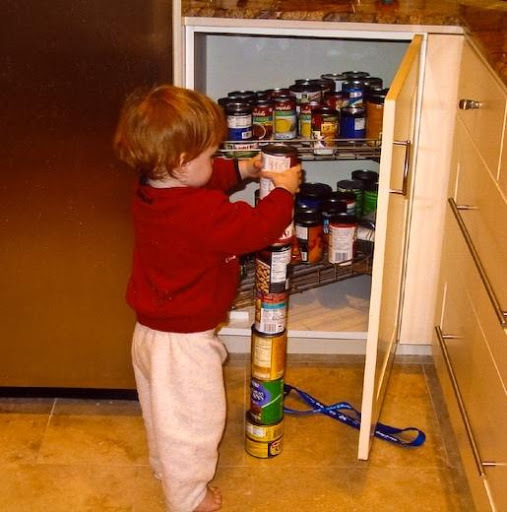What Do We See?
What Do We See?
Topic 2: What Do We See?
Social/Communication Deficits
The CDC reports that eighty to ninety percent of children with autism begin showing symptoms of the disorder before they are two years old. Children with autism might have some or all of the following problems with social skills and communication:
- Difficulty maintaining or lack of eye contact - A child with autism may not look someone in the eye when spoken to, even when the other person is making eye contact with them. They may also have difficulty maintaining eye contact when they are speaking.
- Not recognizing social norms and cues - A child with autism may not understand boundaries and personal space, or have a hard time understanding other people's feelings. They may have a difficult time sharing.
- Difficulty interpreting nonverbal cues - A child with autism may have a hard time recognizing the body language or gestures of others.
- Lack of vocal inflection or rhythm - A child with autism may have a robot-like, or flat (monotone), way of talking. Pitch and tone of voice can also be affected.
- Precision with words and literal interpretations - A child with autism may not understand figures of speech, sarcasm, or jokes.
- No conversational "dance" - A child with autism may talk too much about something they are interested in, without giving the other person a chance to have a back-and-forth conversation.
- Difficulty with speech and language – A child with autism may have delays acquiring speech or language skills. They may reverse their pronouns (say "you" when they mean "I") or answer questions with something unrelated to what was being asked.
- From non-speaking to highly verbal – While the CDC reports that 40% of children with autism do not talk at all, some children with autism have very good communication skills.
Restricted/Repetitive Interests

Counticr (2007) Wikimedia Commons
People with autism may also have some or all of the following signs of restricted or repetitive interests:
- Repetitive movements - A child with autism may flap their hands, flip objects, rock their body, or spin in circles. These movements may be self-stimulating or "stimming."
- Repeating others' words (echolalia) - A child with autism may repeat words or phrases that other people say to them, or they may repeat words or phrases from a favorite movie or book instead of responding in normal language. This is known as scripting.
- Inflexible routines or ritualized patterns - A child with autism may become upset at unexpected or minor changes to daily routines. They may also play with the same toys the same way every time.
- Restricted interests - A child with autism may be intensely interested in one particular subject or a small number of subjects.
Other Symptoms
Some people with autism may also have some or all of the following other symptoms:
- Hyperactivity
- Impulsiveness
- Short attention span
- Aggressive and/or self-injurious behavior
- Feeding/eating issues (learn more below in Physical Health Conditions)
- Sleep issues (learn more below in Physical Health Conditions)
- Unusual emotions – A child with autism may not show any fear of dangerous things or be very fearful of something harmless. They may not laugh at something that seems funny, or they may laugh at an unexpected time.
- Sensory issues – A child with autism may react differently to sounds, smells, tastes, or the way something looks or feels.
To help you review the symptoms of autism, sort the symptoms below into their corresponding categories. In order to make this interactive, we will be using Quizlet. When you enter quizlet, select "MATCH". Please play two rounds!
(Click HERE to get to Quizlet)
Categories:
- Social/Communication Deficits
- Restricted/Repetitive Interests
- Other Symptoms
Symptoms:
- lack of eye contact
- inflexible routines
- unusual emotions
- impulsiveness
- hyperactivity
- difficulty with social norms
- literal interpretations
- echolalia
- sensory issues
- lack of vocal inflection
- repetitive movements
To see a summary of the answers when you've finished (since yours will have disappeared if you did well) click here.
References
Bleicher, A. (2013, April 1). Hunting for autism's earliest clues [Blog post]. Retrieved from https://www.autismspeaks.org/science/science-news/hunting-autisms-earliest-clues.
Centers for Disease Control and Prevention. (2015). Signs and symptoms: Autism Spectrum Disorder. Retrieved from https://www.cdc.gov/ncbddd/autism/signs.html.
National Institute of Mental Health. (2016, October). Autism Spectrum Disorder. Retrieved from https://www.nimh.nih.gov/health/topics/autism-spectrum-disorders-asd/index.shtml.
